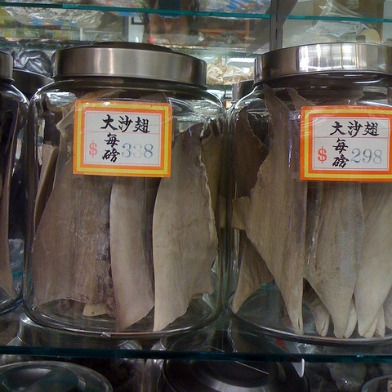 To the average, more-or-less-seal-shaped Ocean Beach surfer, the news that there are currently 219 Great White sharks currently prowling the Northern California coastline might be slightly disconcerting. The team of scientists who actually arrived at that number are similarly concerned–but for a very different reason.
To the average, more-or-less-seal-shaped Ocean Beach surfer, the news that there are currently 219 Great White sharks currently prowling the Northern California coastline might be slightly disconcerting. The team of scientists who actually arrived at that number are similarly concerned–but for a very different reason.
The 22-year longitudinal study of the shark population in the area between Monterey Bay, Bodega Bay and the Farallon Islands (often dubbed the “red triangle” for its reputation as a haven for the infamous maneaters) was the first ever census of its kind tracking the overall population of Great Whites in the area. Led by UC Davis researcher Taylor Chapple, the team was expecting to find the number of sharks somewhere in the four figure range and was shocked when their final tally turned out so low.
The team was able to individually count the sharks using their dorsal fins as identification markers, much like fingerprints. One shark, dubbed “TJ”, was spotted five times over the 22-year period in which the observations took place. To lure the sharks close enough to the boat so they could be identified, the scientists released a “scent plume” of blubber and a seal-shaped decoy. This is further proof that there’s nothing in this world that can resist something curvy with well-calibrated “scent plume.”
While the low number of sharks was unexpected, the researchers cautioned against reading too much into it without knowing the proper context of whether the population is currently growing, shrinking or remaining relatively stable.
The worldwide population of great white sharks, which the International Union for Conservation of Nature lists as a “vulnerable species,” has, according to the New York Times, decreased over 70% in the past 20 years, largely due to, some believe, the demand for shark fin soup.
Great Whites are “apex predators,” meaning that, like polar bears or killer whales they have no natural predators other than humans–however there are significantly fewer Great Whites than those other two top-of-the-food-chain killing machines.
There’s been a recent move towards an intentional ban on the popular Chinese celebratory dish but its been the subject of some controversy.
Want more news, sent to your inbox every day? Then how about subscribing to our email newsletter? Here’s why we think you should. Come on, give it a try.









